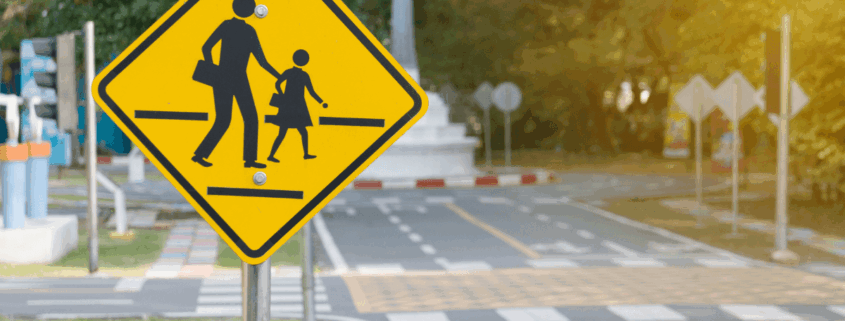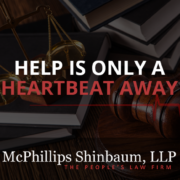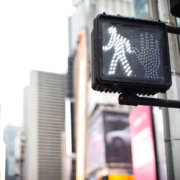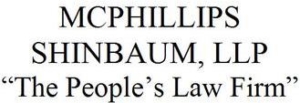Back-to-School Pedestrian Safety: Legal Rights When Children Are Injured in Alabama School Zone Crossings
The end of summer signals a familiar shift for families across Alabama. Backpacks are filled, school bells begin to ring, and the quiet neighborhood streets once again fill with the energy of children walking and biking to school. This return to routine, however, brings a heightened need for caution. School zones, designed as safe havens for students, can become scenes of unexpected tragedy when drivers fail to exercise the appropriate level of care. An accident involving a child pedestrian is a parent’s worst nightmare, leaving a wake of physical and emotional trauma.
What Makes School Zones Uniquely Hazardous?
School zones are intended to be areas of heightened safety, yet they possess a unique combination of factors that can lead to serious accidents. The sheer volume of activity, combined with the unpredictable nature of young children, creates an environment where even a momentary lapse in a driver’s attention can have devastating consequences.
Several specific hazards converge in these areas:
- High Pedestrian Density: At the beginning and end of the school day, sidewalks and crosswalks are crowded with students. This concentration of pedestrians, many of whom are young and less aware of traffic dangers, increases the likelihood of an incident.
- Driver Distraction and Impatience: Motorists navigating school zone traffic may be dealing with their own morning rush, leading to impatience or distraction. Common distractions like using a cell phone, adjusting the radio, or attending to passengers become significantly more dangerous in these congested areas.
- Unpredictable Behavior of Children: Young children may not have a fully developed sense of risk. They can be easily distracted, dart into the street unexpectedly, or misjudge the speed and distance of an approaching vehicle. Drivers have a heightened duty to anticipate this possibility.
- Complex Traffic Flow: School zones often feature a mix of buses stopping and starting, parents dropping off or picking up children, and regular through-traffic. This can create confusing and chaotic situations, demanding complete focus from every driver.
- Weather and Visibility Issues: Poor weather conditions, such as rain or fog, can reduce visibility. Similarly, the glare from the rising or setting sun during school travel times can make it difficult for drivers to see children in a crosswalk.
Alabama Law: What Is the Legal Duty of a Driver in a School Zone?
Alabama law imposes specific and heightened duties on drivers when they enter a designated school zone. These are not mere suggestions; they are legal requirements designed to protect the most vulnerable pedestrians. A driver’s failure to adhere to these rules can serve as strong evidence of negligence in a personal injury claim.
Key legal obligations for drivers in Alabama school zones include:
- Obeying Reduced Speed Limits: When a school zone is active, typically indicated by flashing lights or posted signs, drivers must strictly adhere to the reduced speed limit. Driving even slightly over this limit can be considered negligence.
- Yielding to Pedestrians in Crosswalks: Drivers have an absolute duty to stop and yield the right-of-way to pedestrians who are in a crosswalk, whether it is marked or unmarked. This means coming to a complete stop, not merely slowing down.
- Stopping for School Buses: All drivers, regardless of their direction of travel, must stop when a school bus has its red lights flashing and its stop arm extended. The only exception is on a divided highway with a physical median, where only traffic traveling in the same direction as the bus must stop.
- Exercising Due Care: Beyond specific rules, Alabama law requires drivers to exercise “due care” to avoid colliding with any pedestrian. This is a general standard that means drivers must be alert, attentive, and ready to react to the presence of children, especially near schools.
The presence of crossing guards adds another layer of legal responsibility. All drivers must obey the signals and directions of a school crossing guard. Ignoring a guard’s instruction to stop is a clear violation of the law and can establish fault in an accident.
Who Can Be Held Liable for a Child’s Injuries?
When a child is injured in a school zone crosswalk, it is natural to assume the driver of the vehicle is the only responsible party. While the driver’s negligence is often the primary cause, a thorough investigation may reveal that other parties also share in the liability. Identifying all potentially at-fault parties is a key step in ensuring that your child has access to the full compensation they need for their recovery.
Potential liable parties in a school zone pedestrian accident may include:
The Negligent Driver: The most common defendant is the driver who failed to follow traffic laws, was distracted, or was otherwise careless in their operation of the vehicle.
The Construction Company: If a construction zone near the school created unsafe conditions, such as poorly marked detours, blocked signage, or debris in the roadway, the company responsible for the work could be held liable.
A Government or Municipal Entity: In some cases, a city or county government may be responsible for the accident. This could occur if:
- The crosswalk was poorly designed or maintained.
- Traffic signals were malfunctioning.
- Signage was missing, obscured, or inadequate.
- The school failed to ensure proper supervision or a safe drop-off/pickup procedure.
The Vehicle Manufacturer: In rare instances, a defect in the driver’s vehicle, such as faulty brakes, could have caused or contributed to the accident. In such a scenario, the manufacturer could be a party to the claim.
Claims against government entities in Alabama are particularly complex and involve strict notice requirements and shorter deadlines. It is important to have a knowledgeable attorney review the circumstances of the accident promptly to preserve your right to file a claim.
What Types of Compensation Can Be Recovered?
A personal injury claim following a school zone accident seeks to recover damages for the full scope of harm your child and family have suffered. The goal is to provide financial stability and cover the extensive costs associated with a serious injury. In Alabama, recoverable damages are typically divided into two main categories.
Economic Damages: These are the tangible, out-of-pocket financial losses resulting from the injury. They are documented with bills, receipts, and financial records.
- Medical Expenses: This includes all costs for medical care, from the initial emergency response and hospital stay to future needs like surgery, physical therapy, counseling, and necessary medical equipment.
- Lost Future Earning Capacity: If the injuries are severe enough to impact the child’s ability to work and earn an income in the future, compensation can be sought for this projected loss.
- Out-of-Pocket Costs: This covers related expenses, such as travel for medical appointments or modifications needed for your home to accommodate a disability.
Non-Economic Damages: These damages compensate for the intangible, personal losses that do not have a specific price tag but represent the profound impact of the injury on your child’s life.
- Pain and Suffering: This compensates for the physical pain, discomfort, and emotional distress the child endures because of the accident and their injuries.
- Mental Anguish: This addresses the psychological trauma, including anxiety, fear, depression, or PTSD, that can follow a frightening event.
- Loss of Enjoyment of Life: If the injuries prevent your child from participating in sports, hobbies, and other activities they once enjoyed, this form of compensation may be available.
- Scarring and Disfigurement: Compensation can be sought for permanent scarring or disfigurement that affects the child’s physical appearance and self-esteem.
Determining the full value of a claim, especially one involving a child’s long-term future, requires careful analysis and often involves input from medical and financial professionals.
Should You Settle with the Insurance Company or File a Lawsuit?
Most personal injury cases are resolved through a settlement with an insurance company. Settling out of court can offer several benefits, including a faster resolution, lower legal costs, and reduced emotional stress from avoiding a trial. It also provides a predictable outcome that both parties agree upon.
However, settling is not always the best path forward. Insurance companies are businesses focused on protecting their bottom line, which often means their initial settlement offers are far too low to cover the true cost of an injury. An offer may not account for future medical needs, the potential for long-term complications, or the full extent of your child’s pain and suffering.
There are specific situations where filing a lawsuit becomes the necessary course of action:
- The Settlement Offer is Unfairly Low: If the insurer refuses to make a reasonable offer that reflects the full scope of your damages, litigation may be the only way to pursue fair compensation.
- The Insurance Company Denies Liability: If the insurer unjustly denies your claim or argues that their policyholder was not at fault, filing a lawsuit forces the issue into a formal legal setting.
- The Injuries Are Severe and Long-Term: For catastrophic injuries that will require a lifetime of care, it is important to ensure that any compensation is sufficient for the long road ahead. A lawsuit may be necessary to secure a financial award that can provide for decades of future needs.
Consulting with an Alabama personal injury lawyer can help you weigh the pros and cons. An experienced attorney can evaluate the strength of your case, negotiate with the insurance company on your behalf, and advise you on whether proceeding to court is in your child’s best interest.
Let’s Discuss Your Family’s Legal Options
The safety of our children is a community-wide responsibility, and drivers hold a significant duty to uphold that safety in school zones. When that duty is breached, the consequences can be life-altering. The legal team at McPhillips Shinbaum is prepared to stand with you. Attorney Aaron Luck and our dedicated staff are here to listen to your story, explain your legal options, and provide the personalized guidance you need. We are committed to fighting for the rights of injured children and helping families secure the resources they need to move forward.
If your child has been injured in a school zone accident, we invite you to learn how we can help. Call us at 334-262-1911 or send a message through our online contact form to schedule a free consultation. Let’s talk about your case in greater detail and explore the path to securing justice for your child.



 Why Are Pedestrian Accidents Increasing in Alabama?
Why Are Pedestrian Accidents Increasing in Alabama?







